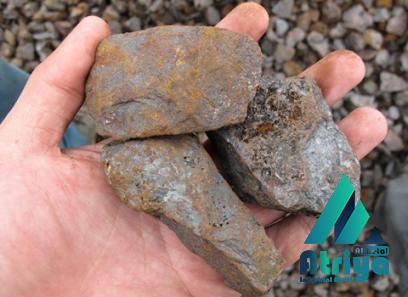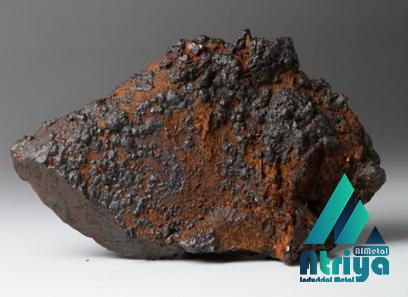In today’s ever-evolving industrial landscape, the need for high-quality raw materials has become paramount. Sponge iron powder, derived from the direct reduction of iron ore, has emerged as a versatile resource that is garnering increasing attention from various industries. This article explores the potential of sponge iron powder and its application merits for businesses seeking innovative solutions. 1. Definition and Production Process: Sponge iron powder, also known as direct reduced iron (DRI) powder, is obtained by reducing iron ore in the solid state, utilizing coal or natural gas as a reductant. The process involves removing oxygen from the ore, resulting in a highly pure and metallic powder with a spongy appearance. This powder is further processed and refined to meet specific industry requirements. 2. Advantageous Properties: Sponge iron powder possesses several advantageous properties that make it an attractive alternative to traditional iron sources: a) Purity and Consistency: Sponge iron powder boasts high purity and uniform composition, making it a reliable raw material for manufacturing processes.

.
 b) Enhanced Metallurgical Characteristics: Its unique sponge-like structure renders the powder highly porous and reactive. This property benefits various metallurgical applications, aiding in the production of high-quality alloys and steel. c) Customizable Particle Size and Shape: Sponge iron powder can be tailored to meet specific particle size and shape requirements, ensuring compatibility and ease of integration with different industrial processes. 3. Industrial Applications: a) Steel Production: Sponge iron powder finds extensive use in the steel industry. Its excellent metallurgical properties make it an ideal feedstock for electric arc and induction furnace steelmaking processes. By blending sponge iron powder with scrap metal, manufacturers can achieve desired chemical compositions and optimize the steel production process. b) Powder Metallurgy: The unique characteristics of sponge iron powder find applications in the production of sintered components.
b) Enhanced Metallurgical Characteristics: Its unique sponge-like structure renders the powder highly porous and reactive. This property benefits various metallurgical applications, aiding in the production of high-quality alloys and steel. c) Customizable Particle Size and Shape: Sponge iron powder can be tailored to meet specific particle size and shape requirements, ensuring compatibility and ease of integration with different industrial processes. 3. Industrial Applications: a) Steel Production: Sponge iron powder finds extensive use in the steel industry. Its excellent metallurgical properties make it an ideal feedstock for electric arc and induction furnace steelmaking processes. By blending sponge iron powder with scrap metal, manufacturers can achieve desired chemical compositions and optimize the steel production process. b) Powder Metallurgy: The unique characteristics of sponge iron powder find applications in the production of sintered components.
..
 The high purity, controlled particle size, and uniform porosity enhance the performance and strength of sintered products used in automotive, aerospace, and engineering industries. c) Chemical and Environmental Applications: Sponge iron powder serves as an effective catalyst in chemical reactions due to its high surface area and ability to facilitate faster reaction rates. Additionally, it finds significance in environmental applications, such as waste water treatment and gas purification, due to its capacity to remove impurities and contaminants. d) Welding and Hardfacing: With its exceptional metallurgical qualities, sponge iron powder is utilized in welding applications to achieve stronger and more durable joints. Moreover, it serves as a cost-effective alternative for hardfacing applications, improving the wear resistance of industrial components.
The high purity, controlled particle size, and uniform porosity enhance the performance and strength of sintered products used in automotive, aerospace, and engineering industries. c) Chemical and Environmental Applications: Sponge iron powder serves as an effective catalyst in chemical reactions due to its high surface area and ability to facilitate faster reaction rates. Additionally, it finds significance in environmental applications, such as waste water treatment and gas purification, due to its capacity to remove impurities and contaminants. d) Welding and Hardfacing: With its exceptional metallurgical qualities, sponge iron powder is utilized in welding applications to achieve stronger and more durable joints. Moreover, it serves as a cost-effective alternative for hardfacing applications, improving the wear resistance of industrial components.
…
 4. Market Outlook and Growth Potential: As industries continue to emphasize sustainable practices, the demand for environmentally friendly and energy-efficient products has surged. The growth potential for sponge iron powder remains promising, particularly in regions witnessing rapid industrialization, such as Asia-Pacific and Latin America. Moreover, advancements in manufacturing technologies and increasing research and development efforts are further elevating the potential applications of sponge iron powder across various sectors. Conclusion: Sponge iron powder, with its exceptional properties and diverse applications, is revolutionizing the industrial landscape. From steel production to powder metallurgy, and from catalysis to welding, the versatility of sponge iron powder opens new avenues for innovation and efficiency. As businesses seek sustainable and high-quality raw materials, embracing the potential of sponge iron powder can drive competitiveness and cater to evolving market demands.
4. Market Outlook and Growth Potential: As industries continue to emphasize sustainable practices, the demand for environmentally friendly and energy-efficient products has surged. The growth potential for sponge iron powder remains promising, particularly in regions witnessing rapid industrialization, such as Asia-Pacific and Latin America. Moreover, advancements in manufacturing technologies and increasing research and development efforts are further elevating the potential applications of sponge iron powder across various sectors. Conclusion: Sponge iron powder, with its exceptional properties and diverse applications, is revolutionizing the industrial landscape. From steel production to powder metallurgy, and from catalysis to welding, the versatility of sponge iron powder opens new avenues for innovation and efficiency. As businesses seek sustainable and high-quality raw materials, embracing the potential of sponge iron powder can drive competitiveness and cater to evolving market demands.











Your comment submitted.